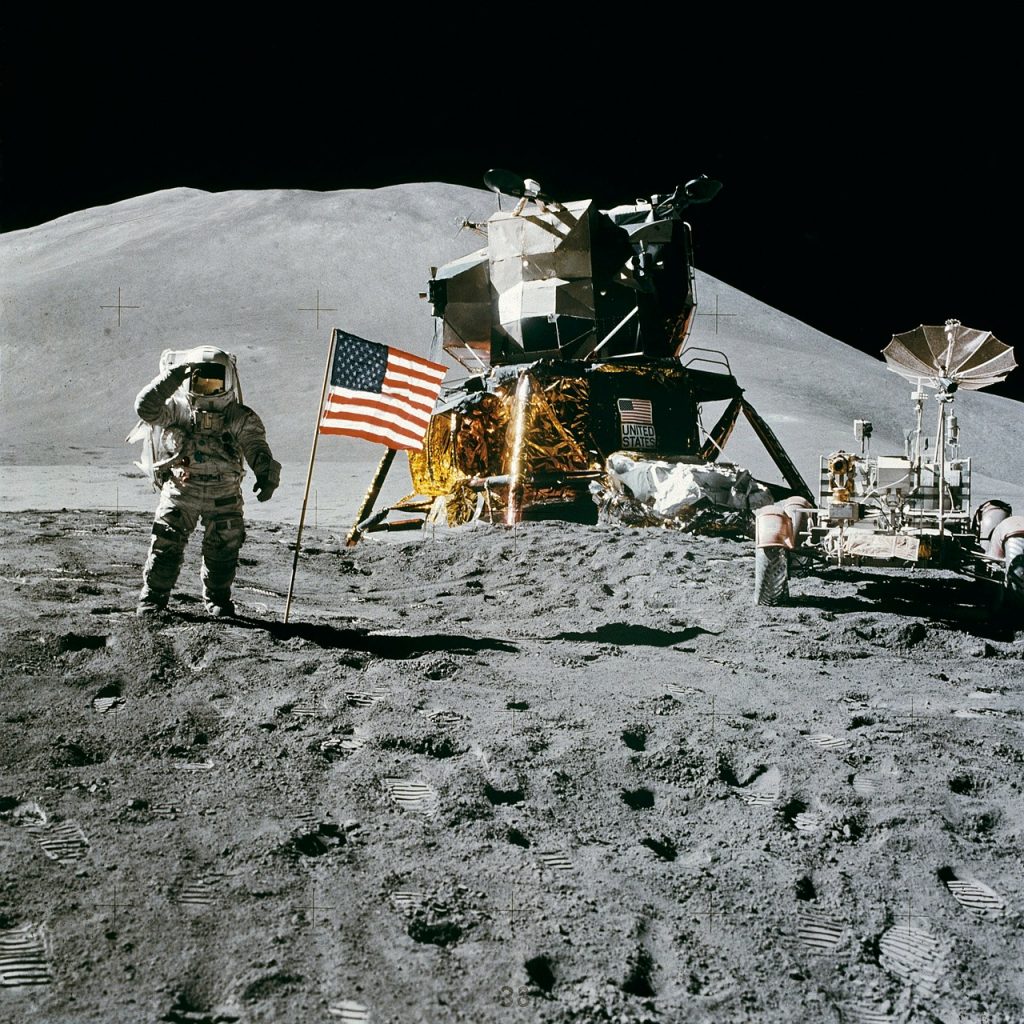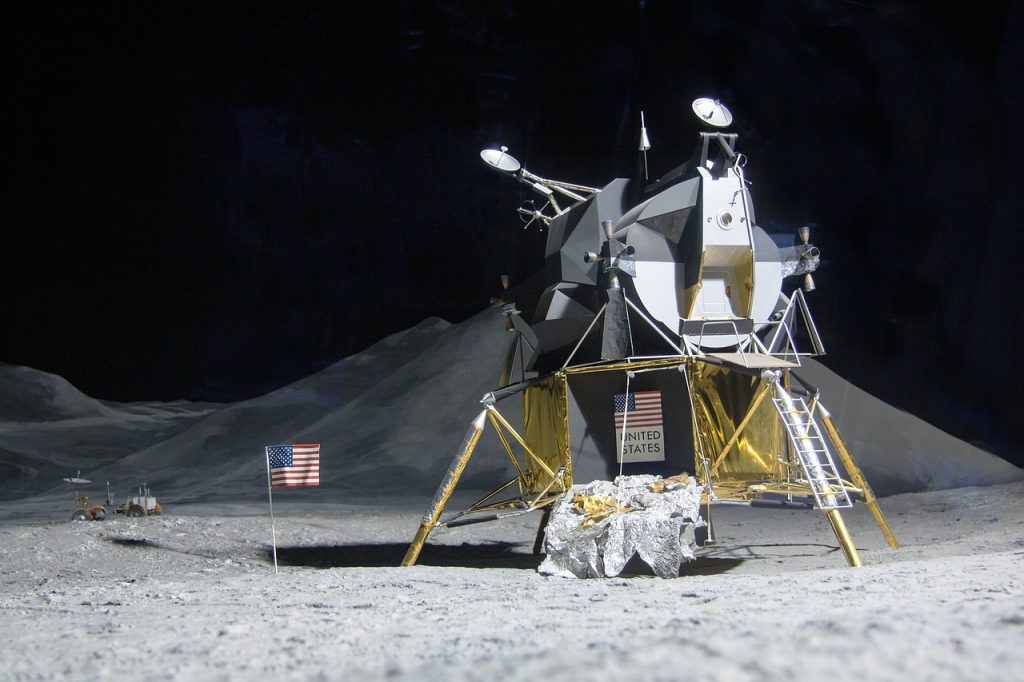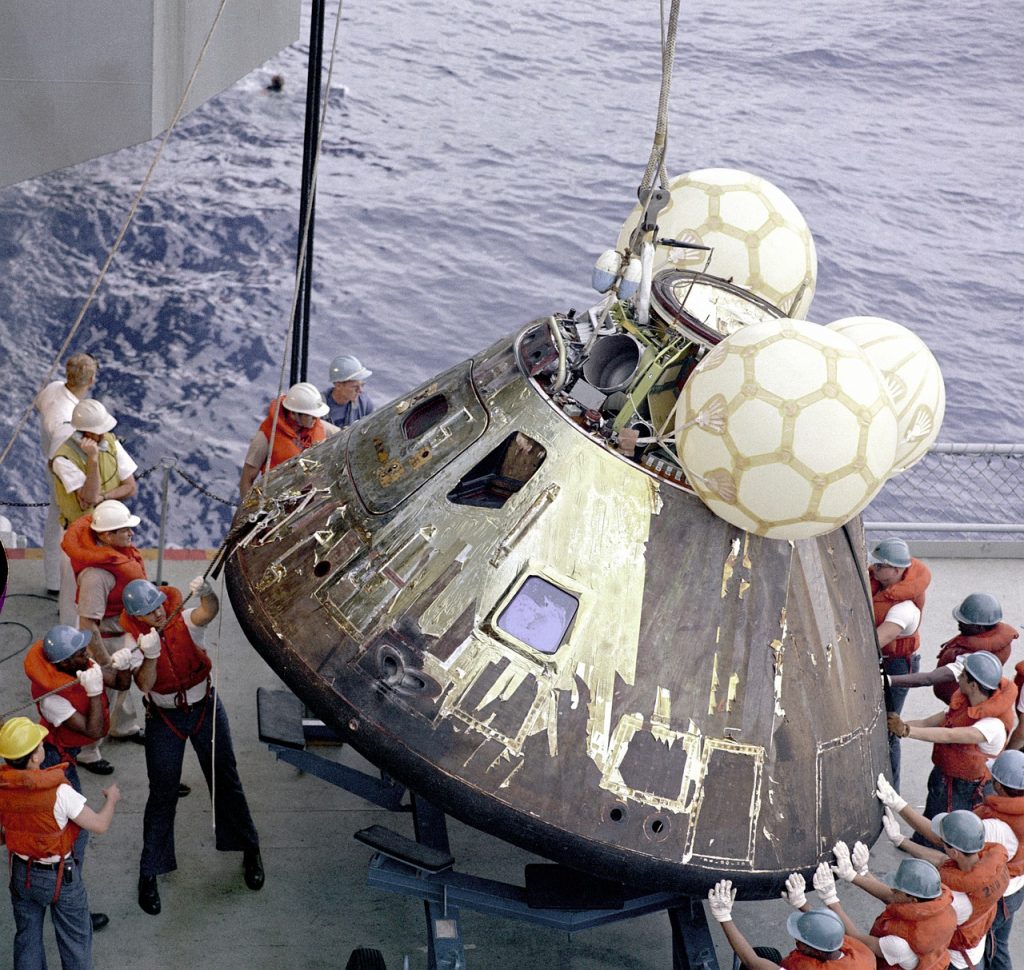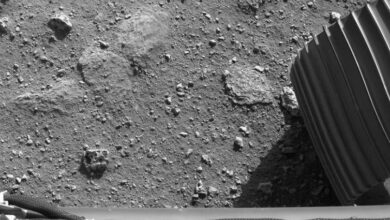The trip to the moon: everything ready in Houston

On July 20, 2019, it will mark the 50th anniversary of the trip to the moon. Special commemorating the 50 years of a man landed on the moon. Here is what you need to know about the special trip to the moon.
The Rocket Saturn V
With a height of 111 meters and capacity to carry a load of 43.5 tons to the Moon, the Saturn V rocket takes off on July 16, 1969, at 10.32 local time, with a thrust of 34.5 million newtons from the 39A launch pad at the Kennedy Space Center in Florida, USA. Three astronauts from NASA are traveling aboard: Neil A. Armstrong (38), Edwin E. Aldrin Jr. (39) and Michael Collins (38), responsible for the Apollo 11 mission.

The Saturn V weighed 2,800 tons and was divided into three sections. The first had 5 F-1 engines that allowed to raise the ship from the ground. The fuel was composed of kerosene and liquid oxygen. Sections 2 and 3 used cryogenic technology with liquid hydrogen as fuel.
Sections To Leave The Earth
The first section of the rocket is separated along with the launch escape tower after 2 minutes and 40 seconds of take-off, at 67 km high. The second section leads to the rocket almost into orbit and is separated after 9 minutes of the launch to a height of 185 km. The third section is separated after 12 minutes of take-off at 187 km, which allows it to escape earth orbit and head towards the Moon.
Travel 384,000 Km
After almost 3 hours since the launch, the ship performs the maneuver called translunar injection, a propulsion maneuver to color itself in a direct lunar trajectory. The trip to the Moon at 9000 km/h demands 3 days to travel the 384,000 kilometers that separate it from Earth.

Start Of Maneuvers
At that time the Apollo 11 crew supervises the navigation devices, course corrections and checks of the various instruments. Before reaching the lunar orbit, the Columbia command module detaches, rotates 180 degrees and attaches to the Eagle descent module.
The Moon Landing

Armstrong and Aldrin pass to the Eagle module and begin to descend gently to the lunar surface. The moon landing occurs in the Sea of Tranquility located at 0º42’50 “N-23º42’28” E. In Houston it is 3:17 PM on July 20, 1969 (20:17:39 UTC).

Trying The Moon
“A small step for a man, a great leap for Humanity,” are the first words of Commander Neil Armstrong to step on the moon floor.
The Houston clock shows 22:56. Astronauts for 2 hours 32 minutes begin to perform different tasks: install the scientific devices (detector of nuclear particles, retroreflector, seismograph and metallic tape to measure the solar wind). They put a TV camera and an American flag. They collect 21 kilos of lunar rock.
Time To Return
At 19: 34 on July 21, The Ascent module rises with Armstrong and Aldrin from the Moon to their rendezvous with Collins, who remains in orbit of the natural satellite. Seven minutes after takeoff, The Eagle enters lunar orbit a hundred kilometers high and five hundred kilometers from Columbia.

At 6.35 pm on July 22, they start the engines of the module starting their return to Earth. It is the so-called trans-Earth injection, which consists of a two-and-a-half-minute hypergolic ignition and which places Columbia on a fall path to Earth that will end in 60 hours.
The Splashdown

The three astronauts managed to land at 18: 50 on July 24, 1500 km southwest of the Hawaiian islands, where they were picked in the Pacific Ocean by the crew of the aircraft carrier USS Hornet. It was exactly eight days, three hours, 18 minutes and 35 seconds after Saturn V left the ramp at Complex 39.




